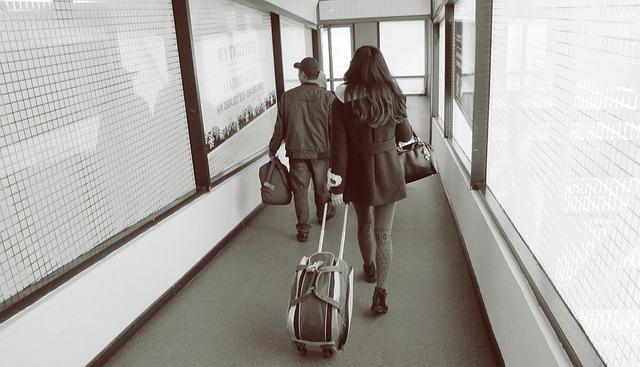Aviation
$10000 Offers Get Off A Plane, CEO Apologies And Free Pizza

$10,000 offers to get off a plane, CEO apologies and free pizza: Here’s how a massive labor shortage and pent-up demand helped create a chaotic summer for airlines.
Each holiday weekend this summer has ended in chaos for many travelers facing huge numbers of flight cancellations and delays. July Fourth weekend could likely be more of the same. According to sources data from the Bureau of Transportation Statistics, there have already been more airline delays in 2022 than in any year during the previous ten years, and there have also been a lot more flight cancellations. Airlines have offered passengers a variety of criteria, including pizza during delayed flights and $10,000 cash to board empty aircraft. Additionally, the Delta CEO issued an apology to the travelling public for the delays.
More than two years after the COVID pandemic, people have begun to travel again. However, as demand increases, experts say airlines are finding it difficult to meet demand with a pilot labor pool that has not yet recovered from the COVID pandemic’s two-year shrinkage.
Scott Kirby, CEO of United Airlines, stated on a quarterly investor call in April that “the pilot shortage for the industry is genuine. And the majority of airlines just won’t be able to fulfil their capacity plans because there aren’t enough pilots, at least not for the ensuing five or more years.
A pandemic-tightened labor supply
When the pandemic stopped the majority of air travel in early 2020 and lockdowns kept millions of Americans and foreign travellers at home due to lockdowns, the airline business suffered severely.
Over the course of 18 months, Congress gave the airline sector three rounds of help totaling $54 billion to keep it afloat. The money was allocated to maintain payrolls so that when limitations were relaxed and travel resumed, there would be an adequate number of pilots, mechanics, and flight attendants.
Tajer claims that as a result, thousands of pilots probably quit their jobs early. According sources to the APA, 715 pilots at American alone have opted for early retirement in 2020.Due to the lower number of available pilots and the increased demand for flights this summer, the pilot labour pool is currently under stress, with airlines bidding against one another for candidates. According to Tajer, other major airlines are starting to hire pilots from American’s regional partners to join their mainline crew.The aviation industry will require a total of 612,000 new pilots along with over a million new maintenance staff and cabin crew over the next 20 years.

Aviation
Boeing, Antonov to Collaborate on Defense Projects

– MOU represents Boeing’s commitment to work with Ukrainian industry
– Includes exploring opportunities for collaborating on in-country support of Unmanned Aerial Systems
A Memorandum of Understanding was signed today by Boeing and Antonov Company to investigate potential collaboration on defense-related projects.
“We’re happy to keep collaborating with the Antonov Company to help Ukraine’s economic development and expansion,” stated Ted Colbert, CEO and president of Boeing Defence, Space, & Security.
Airbus and the Antonov An-225: The Best Partnership:Click here
“This agreement demonstrates our ongoing efforts to find more opportunities to work with Ukrainian industry, which was underscored by our signing of the Ukrainian Defence Industry Compact earlier this year.”
The areas of potential collaboration identified in the agreement consist of training, logistical support and overhaul services for tactical Unmanned Aerial Systems utilized by the Ukrainian Armed Forces, which includes the ScanEagle. In addition, the companies will also explore opportunities for Antonov to provide engineering support to Boeing.
The six largest cargo aircraft ever built in the aviation industry:Click here
“A strong, innovative, and efficient defense industry is key to sustainable economic development and national security, and we are extremely excited to collaborate with Boeing,” said Ievhen Gavrylov, CEO of Antonov Company.
This agreement brings a whole new level of opportunity to implement the latest and most effective solutions – in addition to the possibility of future projects with Boeing in the aerospace and defense industry.”
-

 Travel1 week ago
Travel1 week agoAir India to Expand US Operations with Three New Routes After a Decade
-

 Travel2 weeks ago
Travel2 weeks agoWhy We Should Avoid These Stamps in a Passport
-

 Airlines1 month ago
Airlines1 month agoInvestigations Reveal Fake Chinese Titanium in Boeing and Airbus Jets
-

 Tech4 weeks ago
Tech4 weeks agoChina’s CATL Plans 1,800-Mile Electric Plane Launch by 2027
-

 Airport3 days ago
Airport3 days agoTop 10 Largest Airports in the World by Size
-

 Aerospace4 weeks ago
Aerospace4 weeks agoChina’s Fighter Jets Turn Wings into Autonomous Drones
-

 Airlines4 days ago
Airlines4 days agoAir India Rolls Out A350s for Delhi-New York JFK and Newark Routes
-

 Defence3 weeks ago
Defence3 weeks agoBoeing Enhances Chinook with New Engines and Block II Upgrades at $96 Million







